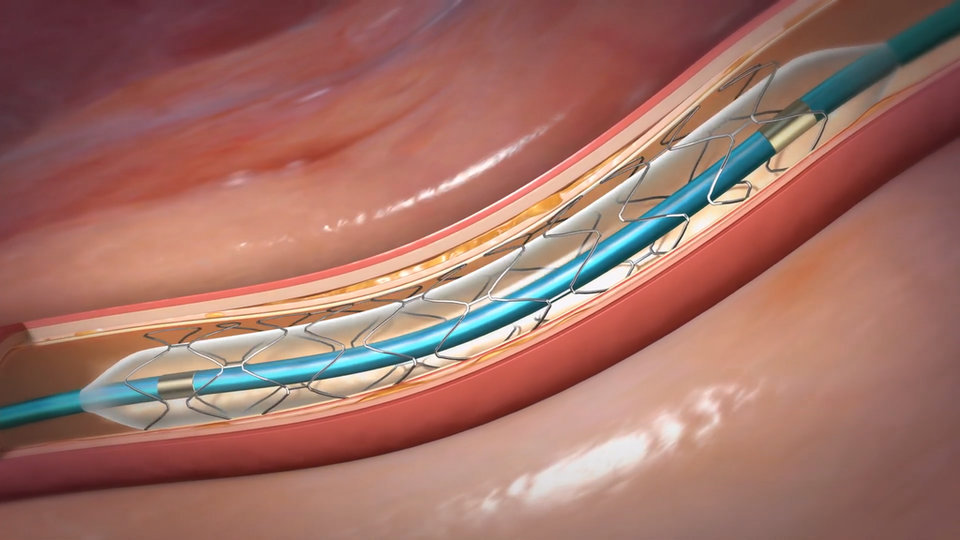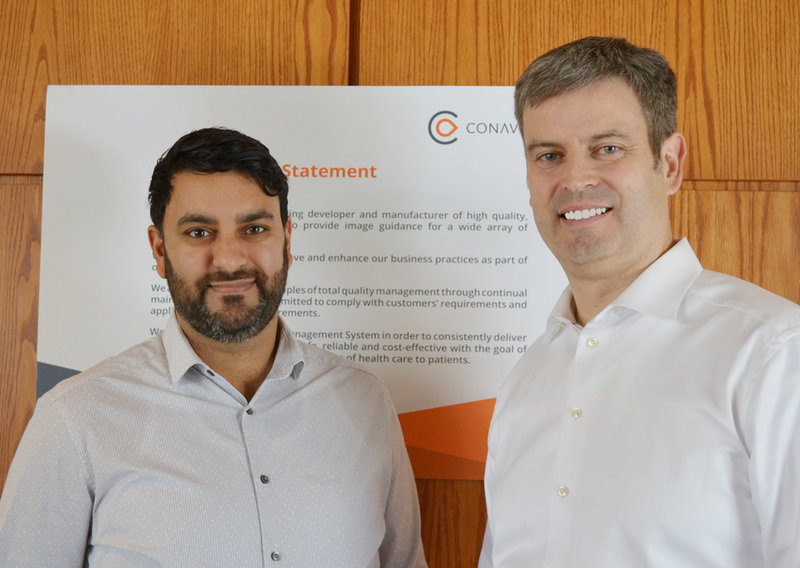As open surgical coronary interventions are becoming increasingly less common, the race is on for innovative technologies that enable superb visualization capabilities in minimally invasive procedures. Conavi´s Novasight Hybrid System combines the best of both commonly used intravascular imaging modalities in one superpowered device, poised to revolutionize angioplasty.
Conavi
Imaging
Redesigning
Intravascular
By Gergana Koleva
For all its cutting-edge capabilities, the Novasight Hybrid System springs out of a basic necessity: the limitations of current imaging modalities in terms of field of view, contrast, resolution, and anatomic reach, compared with the increasingly complex, high-precision procedures interventional cardiologists are called on to perform.
“Ultrasound is great because it can see through blood and through plaque that doesn´t have a lot of calcium, but it doesn´t distinguish as strongly as optical imaging does in terms of identifying different types of soft plaque or thrombus or even stents. So combining the two is very synergistic because you get different information from the two modalities and it´s not redundant information,” says Brian Courtney, Conavi´s president and chief executive officer. “It also opens up potential research opportunities for being able to better stratify different kinds of plaque and how we might want to treat them differently.”
Courtney, who is an interventional cardiologist and clinical researcher at Sunnybrook Health Sciences Center and has degrees in computer and electrical engineering from Waterloo and Stanford, talks in excruciating detail about the leading-edge technology and mechanics behind the Novasight device. But where his passion for his work at Conavi really shines through is in his appreciation for having been able to study, train, and work at hospitals with adjoining research labs, which he sees as the ideal crosspollinating environment that helps innovative ideas flourish – an environment that he has carried over to Conavi.
“My hospital [Sunnybrook] has experience in MRI imaging, in various X-ray technologies, and in multiple forms of ultrasound and optical imaging, so it's a very fruitful place to work. It shares some similarities with Stanford, where I did my initial medical training, in the sense that there is a large research facility built immediately adjacent to a large tertiary care center that sees a large volume of patients. I am able to see patients in clinic or do procedures and then walk five minutes to my research lab and develop or test new technologies within the same building. This is really a prime environment for being highly motivated and highly capable of building new technologies. That's the premise from which Conavi originated,” he says.
Roots of innovation
Conavi, a privately-held company, designs, manufactures, and sells imaging technologies to guide minimally invasive coronary procedures, such as angioplasty and stenting, as well as intracardiac visualization. Its Novasight catheter enables superior visualization of coronary atherosclerosis and guidance for coronary interventions thanks to having built-in optical imaging assembly and ultrasound transducer that acquire co-registered and co-aligned IVUS and OCT complementary images.
Courtney emphasizes that the main benefit of the Novasight device, especially for physicians who are conservative or hesitant in terms of adopting new technology, is that its dual imaging modality lends itself to being used complementarily or selectively, depending on the user´s preferred format. Thus, if a cardiologist has been using IVUS for 10 or 20 years and feels very confident about interpreting such images, but still wishes to explore additional visual information that OCT can offer, they don´t have to stop using ultrasound in order to get optical imaging, but rather can use the Novasight and get both.
On the other hand, relying only or mostly on OCT has its own challenges, since taking a good picture of plaque buildup depends on getting rid of the blood, which is not always easy to achieve, by injecting enough contrast agent to fully displace the blood. Additionally, exposing the patient to contrast agent every time OCT images are acquired adds a small risk to inducing kidney injury. As a result of these challenges, the size of a plaque may not be fully visualized because OCT just cannot “see” through it.
“I think there's a lot of opportunity for a technology like ours to be very attractive so that people who maybe have not been comfortable with using intravascular imaging in the past might feel more comfortable if there's a technology that is more fully featured. We're a promising technology from that perspective,” says Courtney.
The Novasight technology

Although it has all the bearings of a pioneering first product with immediate clinical impact, Novasight is in fact the second instalment in Conavi´s cardiovascular innovation line. It is preceded by the Foresight ICE, a rotational intracardiac echo system that is capable of acquiring 2D and 3D images with a full 360 degree field of view, such that cardiac and vascular structures surrounding the catheter tip are always in view, while those in front of it can be seen by adjusting the field of view forward.
“We built this imaging system that rotates but also tilts; it can image wherever you can point the transducer. It's not limited to a range where you can electronically steer beam, which tends to be a substantially narrower range of angles. That gives us the ability to conceptually collect 3D images in a catheter that can be miniaturized and that can look off the tip of the catheter as opposed to from the side of the catheter,” says Courtney of the main advantages of the Foresight.
Yet, he concedes that although the Foresight was the company´s “firstborn,” attention has currently shifted to the Novasight, because that turned out to be the device that attracts most attention. Part of the reason for it is that the coronary disease market is much larger than the population of patients with atrial fibrillation ablation, whom the Foresight is primarily geared to. There is also a significant number of additional endovascular, structural heart and electrophysiology applications the Foresight is suited to and Conavi intends to spend more time studying in which among them the device is most helpful.
Foresight

Courtney is optimistic that Conavi´s success in the past two years in obtaining both a Health Canada medical device license for the Novasight – whose first clinical use was piloted in 2018 under an investigational testing authorization at Hamilton General Hospital – and an FDA 510(k) clearance will accelerate approvals in other countries as well. A Japanese company named Japan Lifeline has applied for regulatory approval of the imaging system in that country. Intravascular imaging is used in the vast majority of patients undergoing coronary angioplasty and stenting, making it an important market.
“There is currently no one else that has an approved hybrid IVUS product in any jurisdiction in the world. There are other companies developing hybrid IVUS and OCT systems, but we are the only one that has a product that is cleared,” Courtney remarks.
As for the secret to Novasight´s success, Courtney says it lies in the company´s ability to embody through technology the “holy grail” of precision medicine.
“There is a lot of discussion about personalized medicine and precision medicine, and imaging really embodies both of those from an anatomic perspective and from an underlying disease perspective. In the same way that we are all different on the outside in our appearance, behaviour and other features, we are very different on the inside in terms of the arrangement and size of our cardiovascular anatomy and the kinds of diseases that we are susceptible to. So if we're going to start doing an increasing number of interventions to treat cardiovascular disease, imaging is a critical element to being able to do those in a manner that is appropriate for each patient, their anatomic differences, and the differences of their historic disease that's causing them to seek medical care in the first place.”
International ambitions
Conavi’s patented Novasight imaging technology, developed at Canada´s Sunnybrook Research Institute, is the world´s first clinical system that integrates intravascular ultrasound (IVUS) and optical coherence tomography (OCT) onto a single catheter for enhanced simultaneous imaging of coronary arteries. The technology comes without compromising on catheter size and has received 510(k) clearance from the FDA and approval from Health Canada.

I'm able to see patients in clinic or do procedures and then walk five minutes to my research lab and be able to develop or test new technologies within the same building, which is really a prime environment for being highly motivated and highly capable of building new technologies. That's the premise from which Conavi originated.
Brian Courtney, MD, President and CEO, Conavi


